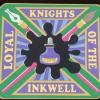Transitional Cap Style
-
Forum Statistics
354.8k
Total Topics4.6m
Total Posts -
Member Statistics
127,927
Total Members18,857
Most OnlineNewest Member
affiliate_program_olOl
Joined -
Images
-
Albums
-
Andrew Lensky Arts
- By Andrew_L,
- 1
- 19
- 36
-
USG 7
- By USG,
- 0
- 0
- 28
-
Icones Pupulinianae VI
- By fpupulin,
- 0
- 0
- 2
-
Parker Majesties
- By Stefanos Fafalios,
- 1
- 0
- 1
-
Pen Club additions
- By Penguincollector,
- 2
- 0
- 8
-














FP.jpg.d80f66a4b21f945fa699c95e7cc9a1cf.jpg)



.thumb.jpg.f07fa8de82f3c2bce9737ae64fbca314.jpg)



.thumb.jpg.331e554113c33fb39d5bf3233878978a.jpg)





Recommended Posts
Create an account or sign in to comment
You need to be a member in order to leave a comment
Create an account
Sign up for a new account in our community. It's easy!
Register a new accountSign in
Already have an account? Sign in here.
Sign In Now